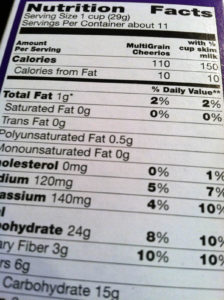True.
YOU’VE JUST COMPLETED another 30-minute workout on the exercise bike. You worked up a good sweat, and you’re feeling great about yourself! As you climb off, you check the number of calories you burned during the workout. The digital display says 300 calories. You think to yourself, “Hey, that’s pretty good!”
Then you remember what your mother-in-law told you last week—that you have to burn 3,500 calories to lose a pound. Arrrgghh! After some quick calculations in your head (and praying she was wrong), you figure you need to climb on that bike about 11 more times to reach that number.
The calories that need to be burned to lose a pound can seem overwhelming to some, but don’t despair; it’s not as difficult as it might seem.
Your mother-in-law indeed was right: You need to burn around 3,500 calories if you want to see your scale register a pound less. An article on mayoclinic.com states, “Because 3,500 calories equals about 1 pound (0.45 kilograms) of fat, you need to burn 3,500 calories more than you take in to lose 1 pound. So if you cut 500 calories from your typical diet each day, you’d lose about 1 pound a week (500 calories x 7 days = 3,500 calories). It isn’t quite this simple, however, as you usually lose a combination of fat, lean tissue and water.”
As stated in the article, the concept of having to burn 3,500 calories to lose a pound might be a bit of an oversimplification. Consider that there are 454 grams in a pound and roughly 9 calories in a gram of fat. It would appear that you would really need to lose 4,086 calories (454 x 9) if you wanted to lose a pound—a pound of fat, that is.
But fat (adipose tissue) contains things other than pure fat—small amounts of protein, connective tissue and water, for example. When we work out, we generally don’t burn just fat, so that is where the 3,500 number comes from. Experts have worked on highly complex calculations that attempt to determine how many calories we would need to burn to lose weight if that weight loss comes from fat, lean tissue, a combination of the two, etc. This short chapter is not the venue to fully explore these calculations, as they truly are complex and can be confusing. Although 3,500 calories might not be the exact number of calories you need to burn to shed a pound, it certainly is in the ballpark. And it is a great benchmark or place to start if you want to begin monitoring your calories for weight-loss purposes.
So what do you need to do to achieve a caloric deficit of approximately 500 calories a day (3,500 calories a week) and lose a pound? I would highly recommend using a combination of physical activity and a slight calorie reduction. If you can manage to burn 300 calories a day from physical activity and eat 200 fewer calories (there are about 200 calories in a bagel)—and do it consistently—you should be able to lose about a pound a week. That would be over 50 pounds in a year!
Most people don’t gain weight that fast, but many get frustrated when it doesn’t come off as quickly as they would like. I believe small, sensible changes that you can tolerate and maintain are the key to weight-loss success.
Mayo Clinic Staff. Counting calories: Get back to weight-loss basics. www.mayoclinic.com/ health/calories/WT00011. Website accessed July 20, 2012.
